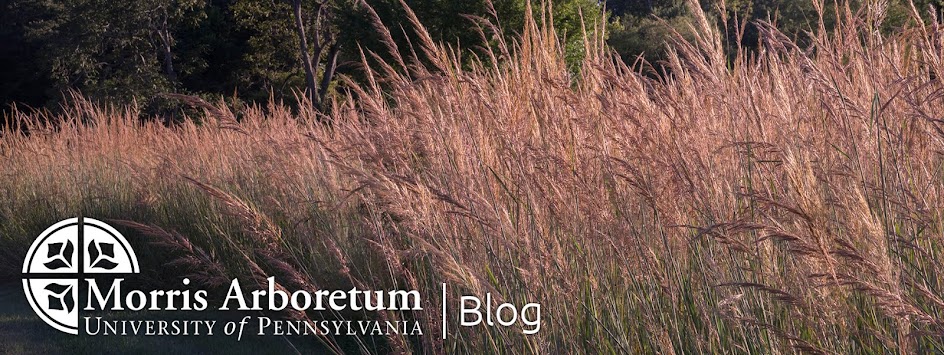 Over the past couple months you may have
noticed a large, shrubby plant with reddish stems and beautiful purple-black berries.
What you are seeing is Common Pokeweed, Phytolacca
americana. Although I often find it attractive, pokeweed is generally
considered an unwanted garden invader.
Over the past couple months you may have
noticed a large, shrubby plant with reddish stems and beautiful purple-black berries.
What you are seeing is Common Pokeweed, Phytolacca
americana. Although I often find it attractive, pokeweed is generally
considered an unwanted garden invader.
Pokeweed
is a native herbaceous perennial. It can grow one to three meters tall and
resembles a small tree. The large, thick stems are smooth and upright, while
the leaves are alternate, egg-shaped and pale green. Pokeweed is supported by a
large fleshy taproot that persists through the winter after the succulent stems
have died back. Pokeweed flowers are
small and white and give way to conspicuous green berries that ripen to a deep
purple-black color. Even though the fruit may look tempting, don’t eat it! All
parts of the pokeweed plant are poisonous, including the berries.
 In
natural areas, pokeweed is an important wildlife plant. Berry-eating birds,
such as Northern Mockingbirds, American Robins and Cedar Waxwings, load up on
pokeweed berries. Many mammals including gray fox, raccoons, and white-footed
mice enjoy the fall fruit as well. Both birds and mammals are directly
responsible for the spread of pokeweed seeds. Despite pokeweed’s wildlife
benefits, it is generally considered a weed in the cultivated landscape.
Pokeweed grows very quickly and will shade out desirable bedding plants if it
is allowed to grow. In many cases, pokeweed is not an aesthetically pleasing
addition to a garden bed.
In
natural areas, pokeweed is an important wildlife plant. Berry-eating birds,
such as Northern Mockingbirds, American Robins and Cedar Waxwings, load up on
pokeweed berries. Many mammals including gray fox, raccoons, and white-footed
mice enjoy the fall fruit as well. Both birds and mammals are directly
responsible for the spread of pokeweed seeds. Despite pokeweed’s wildlife
benefits, it is generally considered a weed in the cultivated landscape.
Pokeweed grows very quickly and will shade out desirable bedding plants if it
is allowed to grow. In many cases, pokeweed is not an aesthetically pleasing
addition to a garden bed.
Pokeweed
is fairly easy to control once you have identified it. The plant can be
destroyed simply by digging up the taproot with a spade or soil knife. If
possible, try to remove plants before they form fruit. Otherwise, the animals
in your area will help spread this weed throughout your yard. Although it is
probably too late to stop the spread of seeds this year, keep an eye out for
new plants in the spring. In the meantime, happy weeding!
Photos by Emma Erler
Photos by Emma Erler
